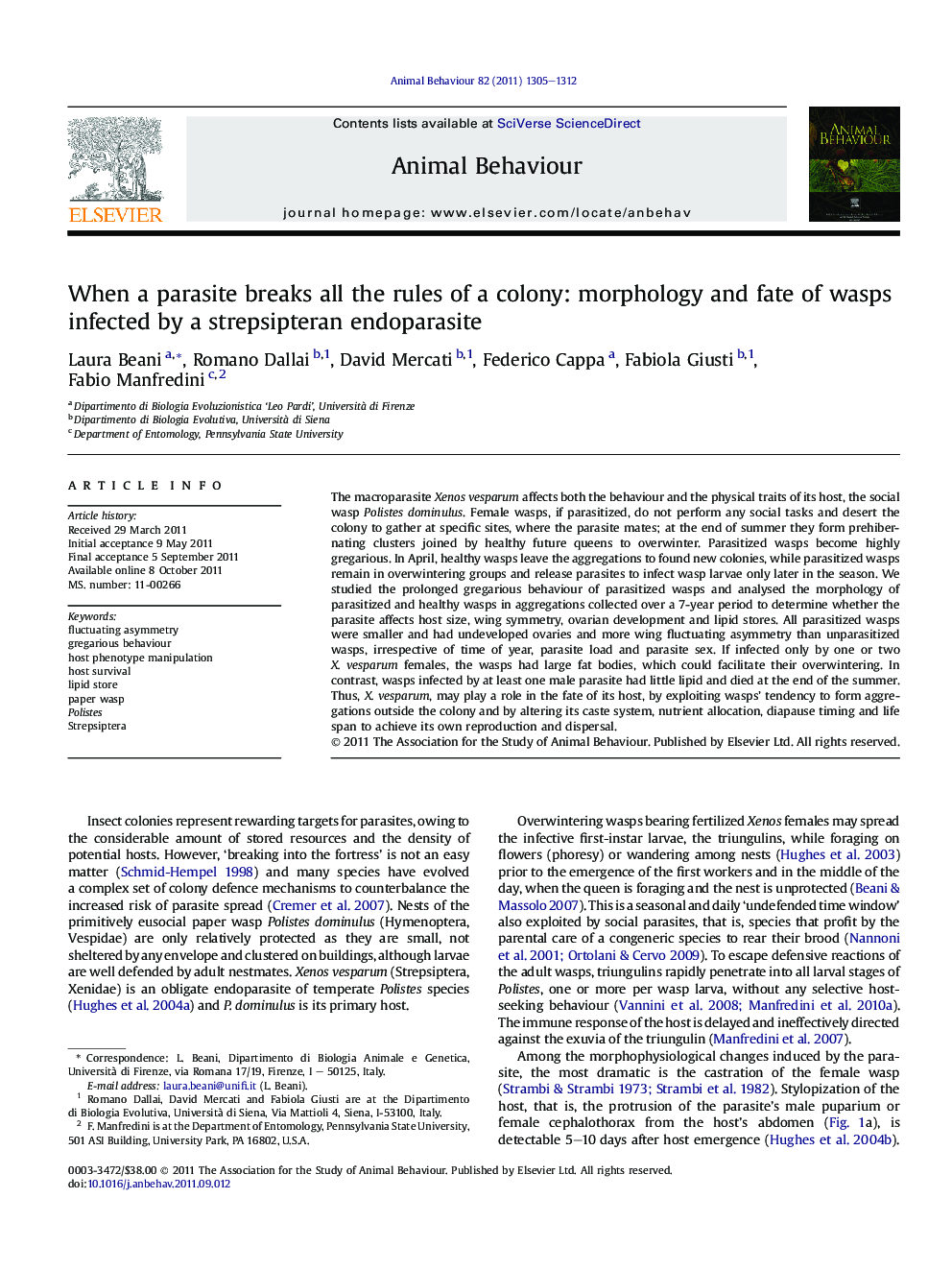| Article ID | Journal | Published Year | Pages | File Type |
|---|---|---|---|---|
| 2416864 | Animal Behaviour | 2011 | 8 Pages |
The macroparasite Xenos vesparum affects both the behaviour and the physical traits of its host, the social wasp Polistes dominulus. Female wasps, if parasitized, do not perform any social tasks and desert the colony to gather at specific sites, where the parasite mates; at the end of summer they form prehibernating clusters joined by healthy future queens to overwinter. Parasitized wasps become highly gregarious. In April, healthy wasps leave the aggregations to found new colonies, while parasitized wasps remain in overwintering groups and release parasites to infect wasp larvae only later in the season. We studied the prolonged gregarious behaviour of parasitized wasps and analysed the morphology of parasitized and healthy wasps in aggregations collected over a 7-year period to determine whether the parasite affects host size, wing symmetry, ovarian development and lipid stores. All parasitized wasps were smaller and had undeveloped ovaries and more wing fluctuating asymmetry than unparasitized wasps, irrespective of time of year, parasite load and parasite sex. If infected only by one or two X. vesparum females, the wasps had large fat bodies, which could facilitate their overwintering. In contrast, wasps infected by at least one male parasite had little lipid and died at the end of the summer. Thus, X. vesparum, may play a role in the fate of its host, by exploiting wasps' tendency to form aggregations outside the colony and by altering its caste system, nutrient allocation, diapause timing and life span to achieve its own reproduction and dispersal.
► Xenos vesparum is an obligate parasite of the paper wasp Polistes dominulus. ► This bizarre organism manipulates the phenotype and the behaviour of its host. ► Infected wasps, which are castrated, are gregarious but not social. ► After the mating of the parasite, they survive in aggregations to be the vector of the next infection. ► The parasite affects the size of the host, its ovarian development and fat bodies storage.
